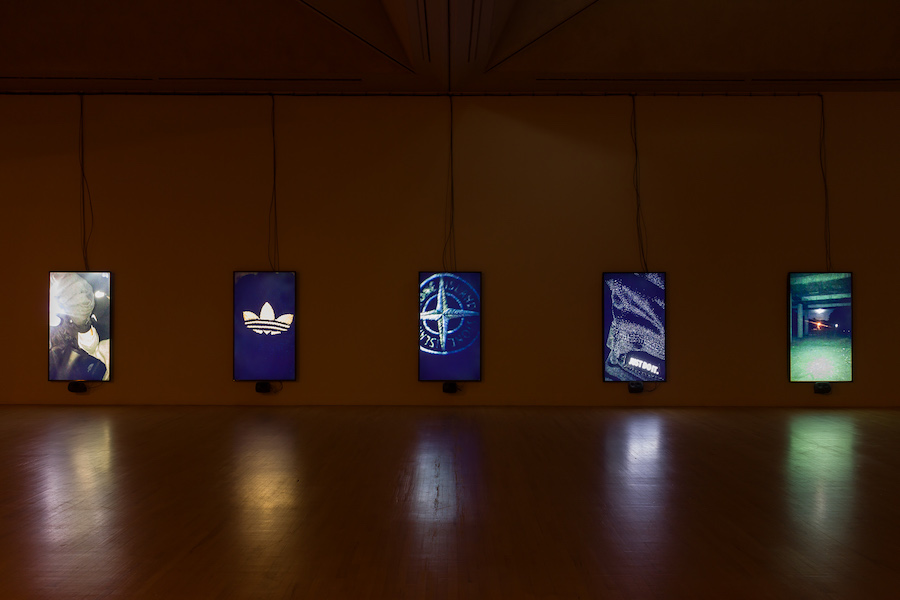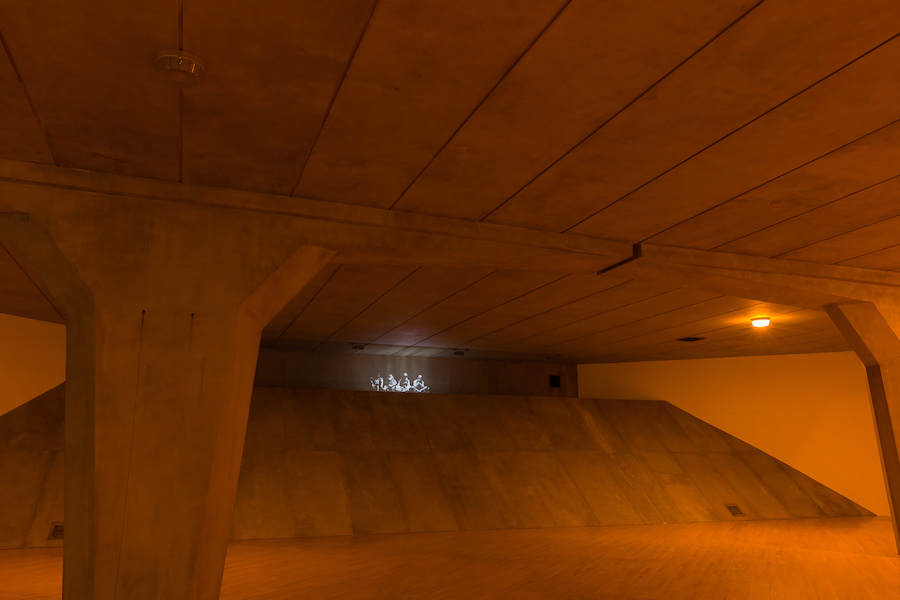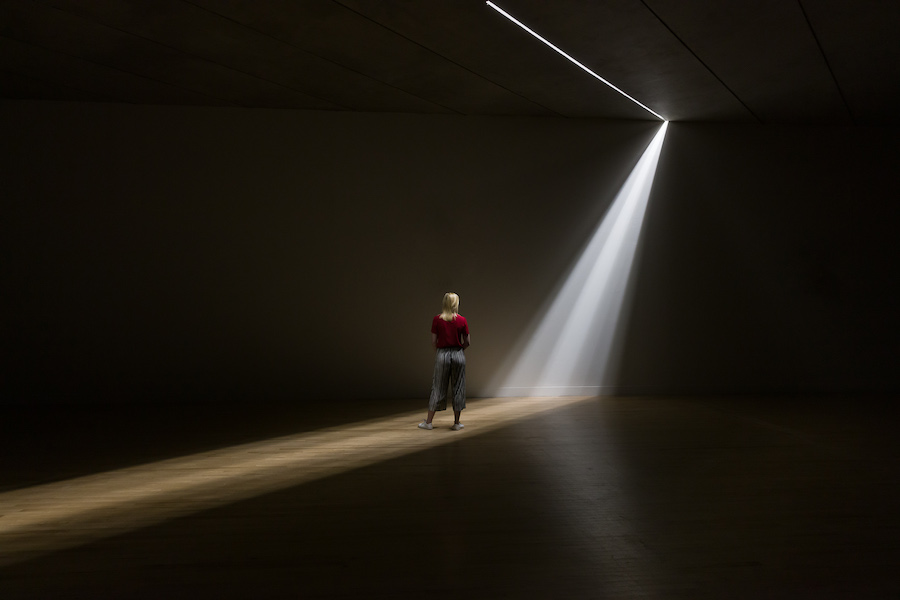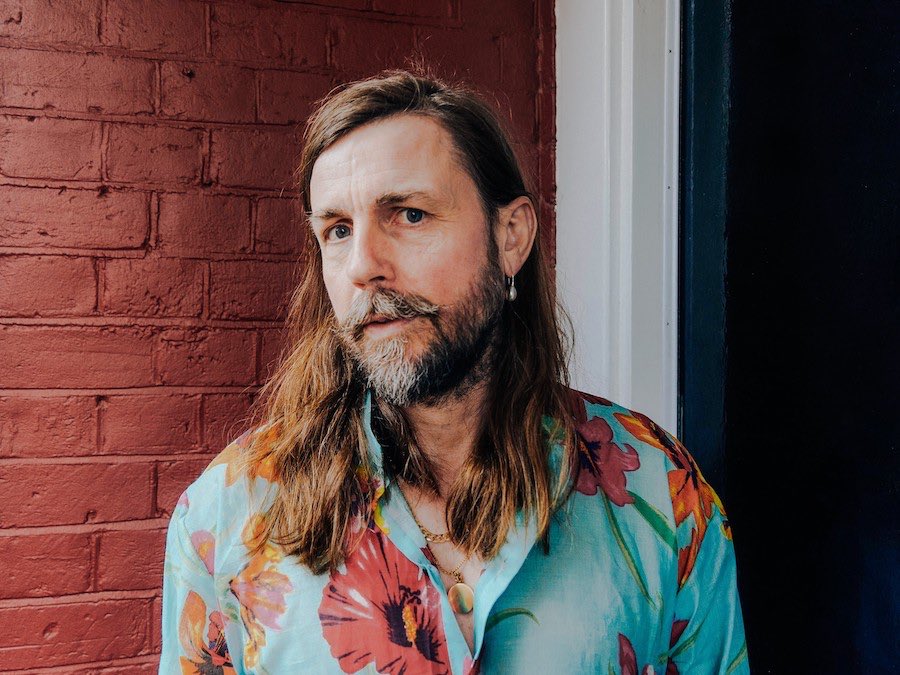
Words by Caterina Avataneo
When entering Mark Leckey solo show at Tate Britain, a 1:1 replica of a section of the M53 motorway runs diagonally into the space and wipes out the neoclassic features of the rest of the Institution’s building, immersing the viewer in a urban environment, a bridge, where the artist’s new multi-channel video Under Under In is screened together with the projection of two of his previous moving image works: Fiorucci Made Me Hardcore (1999) and Dream English Kid, 1964 -1999 AD (2015). The space is dark and cold, exactly how it would be during a nocturnal walk in the suburban landscape; chunky concrete pillars sustain the road above and everything feels very familiar.
The motorway plays a central role in the videos as well. It is in fact the setting where the narrative of Under Under In unfolds and it also repeatedly appears as a 3D model-like version in Dream English Kid, 1964 -1999 AD. In the former case the motorway becomes a timeless space where a group of teenagers hang out, share maltesers milkshakes and chat boyishly until when experiencing supernatural encounters – if chemically or magically rests unclear. As the boys travel to a stone-age environment of unexplored ancestral and quite spectral caves, it feels like they are enabled to track some deep-time memories that live embedded in the urban space where this journey takes place. The viewer, on the other hand, gets transported into an eerie environment as well. In the space children voices bounce from pillar to pillar, a times becoming scary whispers; the orange street lights flicker like in horror movies and a celestial beam of light from above reveals a colourless apparition of the same group of boys underneath the bridge, exactly as they are filmed in the multi-channel video playing on five monitors at the side of the room. Towards the end of the film, the shadowy boys materialise again, projected on a wall and adding onto the ghostly energy of the space. Through twisting movements, they create arches with their elastic young bodies. They mimic the bridge where they sit and the caves where they travel, transcending their physical presence and becoming something other.


Conversely, the same motorway seems instead to mark chronological time in Dream English Kid, 1964 -1999 AD. The bridge appears at first as immaculate and newly built, together with a series of footage of the 1964 launch of a satellite balloon into space and some interiors and patterns – social and decorative – typical of the optimistic post-war Britain looking at a glorious future in the name of scientific and technological development. The bridge occurs then again, older, with violent graffiti and the scars of history on its surface – “enter at your own risk”: it’s the 70s punk revolution. Credits of Dario Argento horror movie Deep Red, a bloody moon, URSS military attacks and a Cinzano label among other footage, feature in an insistent, majorly red and alarming sequence that leads to another more dystopian and post- apocalyptic apparition of the same bridge, suggesting a post-nuclear explosion and a suburb lacking of human presence. Finally, amateur
recordings on VHS whose date is typically stated on the top or bottom corners of the film framing, a lilac Frisbee flying over a fence reminiscent of an UFO, some sparsely furnished interiors suggesting nihilistic life style, London Kills Me: it’s the 90s. And before the video ends with the countdown to the last solar eclipse of the century – “time to totality”, the bridge appears one last time, gentrified and re-treated with a fresh coat of blue and yellow paint perhaps part of some re-development plans of the area for the so-called “creative industries”.
The 90s, and its rave dance-floors, feature again in Fiorucci Made Me Hardcore, the film that assured Mark Leckey the Turner Prize in 2008. Using material collated online, the film functions as homage to British working class youth and their gatherings in basements with club music spinning out of cheap sound systems. Dilated pupils, chewing mouths, grinning grainy faces, sweat and relentless moves in oversized t-shirts repeat over and over looped rhythmically in an ecstatic mode, worthy of trance states. The collective power of 90s UK subcultures and its technologically obsolete aesthetic play around nostalgia, but it is not only about that. There is something personal, in each of the videos.


As the texture of flesh tone tights with fishnet stockings on top blends into a green mesh for urban planning; or a wilted red sleeping bag recalls the 1964 space balloon seconds before inflating, the micro and macro scale overlap as the narrative intertwines with Leckey’s own hunting past. Music – from The Beatles to Acid House – plays an important role, connecting personal anecdotes with collective memories and tribal behaviour. The circle is a recurring motif, just as loop is frequently employed as editing technique. The M53 motorway bridge is where the artist used to hang out with friends during his teenage and where he recalls having some strange encounters. 1964 is the year when Leckey was born and so Dream English Kid, 1964 -1999 AD turns to be a collage of personal memories, and an attempt to collect an archive of experiences, including the found footage of a Joy Division gig which the artist attended in 1979.
During the duration of Fiorucci Made Me Hardcore there is a glimpse of a translucent superimposition of Leckey’s own visage. A times a male figure turning his back to the camera observes the city from afar; he is viewer, but also maker and participant. He is a presence in the video and outside of it at the same time. I like to think he is the artist, again, who inhabits the urban landscape and revisits the memories of a place of emotions, collective milieu for younger generations. Despite being a major artery for metropolitan networks, the motorway here distances itself from the non-place definition. The visitors – as well – become inhabitants of the suburban motorway and, leaning against its pillars, they are exposed to collective feelings of history, togetherness and youth.












